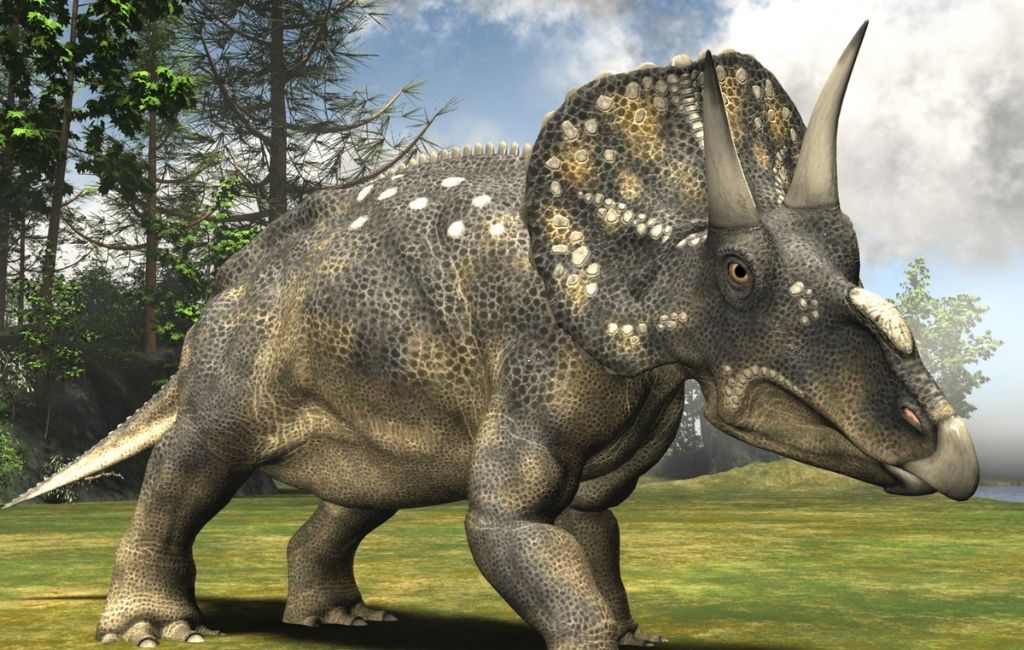Triceratops, meaning ‘three-horned face’ in Greek, was a herbivorous dinosaur that lived around 68 million years ago. It had a large skull, horns and a frill on its neck.
Triceratops often lived in herds to protect themselves from predators. But a fossil from the Hell Creek formation in South Dakota shows that sometimes they would fight each other.
Herbivorous Dinosaur
Triceratops was a herbivorous dinosaur that lived during the late Cretaceous period in North America. It was one of the largest land animals at the time and weighed between 6.1 and 12.0 tonnes.
It had a huge skull that was the size of a modern rhinoceros, with a single horn on its snout and two horns above each eye. Triceratops also had a short, bony frill around its neck.
Intimidate Rivals
These horns were probably used to intimidate rivals and maybe even attract mates. They could also be used for defense against predators.
Triceratops also walked on four legs with a long tail that was likely dragged behind. It also had conical thumbs for self-defense and bony beaks and molars for chewing plants.
Large Skull
One of the most distinctive features of triceratops is its big skull. With its three horns and huge bony frill, it’s easy to imagine this dinosaur fighting off predators like the Tyrannosaurus rex.
Triceratops was a herbivore and likely ate lots of different types of plants, such as ferns and conifers. It had large jaws and teeth that could crush plant tissue, similar to an elephant’s claws today.
Bulk & Horns for Protection
Nevertheless, Triceratops was far from the largest dinosaur that roamed during the Late Cretaceous period. It wasn’t the smallest either, and it was able to fight off tinier predators by standing tall, with its bulk and horns for protection.
According to a study, subadults and adults had a typical Triceratops skull size of about 63 inches or 160 centimeters. While that’s a bit smaller than sauropods, it’s much larger than hadrosaurs and even many of today’s animals.
Three Horns
Triceratops, whose name means ‘three-horned face’ in Greek, was a genus of herbivorous chasmosaurine ceratopsians that lived during the Late Cretaceous period, about 68 million years ago. It was a massive, plant-eating herbivore that weighed up to 12 tons.
Source of Protection
Its three horns were probably used for duelling, like a stag’s antlers, and its giant frill may have been a source of protection. Some specimens have Tyrannosaurus bite marks puncturing the frill, confirming that these dinosaurs did have active conflicts with one another.
Important for Fighting
While horns were important for fighting, they could also be used to attract mates. It’s believed that males with horns were more attractive to females during mating season, and that these traits were passed down to their offspring.
When threatened by a predator, this reptile raises its neck frill, opens its mouth and hisses in an attempt to scare the creature away. Fortunately, frilled lizards don’t usually bite or even hurt humans in the wild.
Rather, they are known for running around on their hind legs to escape threats. Their reputation for threatening a predator is understandable, but they do it in an effort to confuse the animal so that it will give them space to run away.
Final Words:
In some cases, this lizard has been seen running at 30 miles per hour!
In fact, it may have been so fast that other dinosaurs resorted to using their horns as a means of avoiding the predator. Interestingly, Triceratops also had a gaping ‘combat wound’ in its neck frill that was likely caused by the horns of another dinosaur — something experts have long suspected, but had so far been unable to verify.


